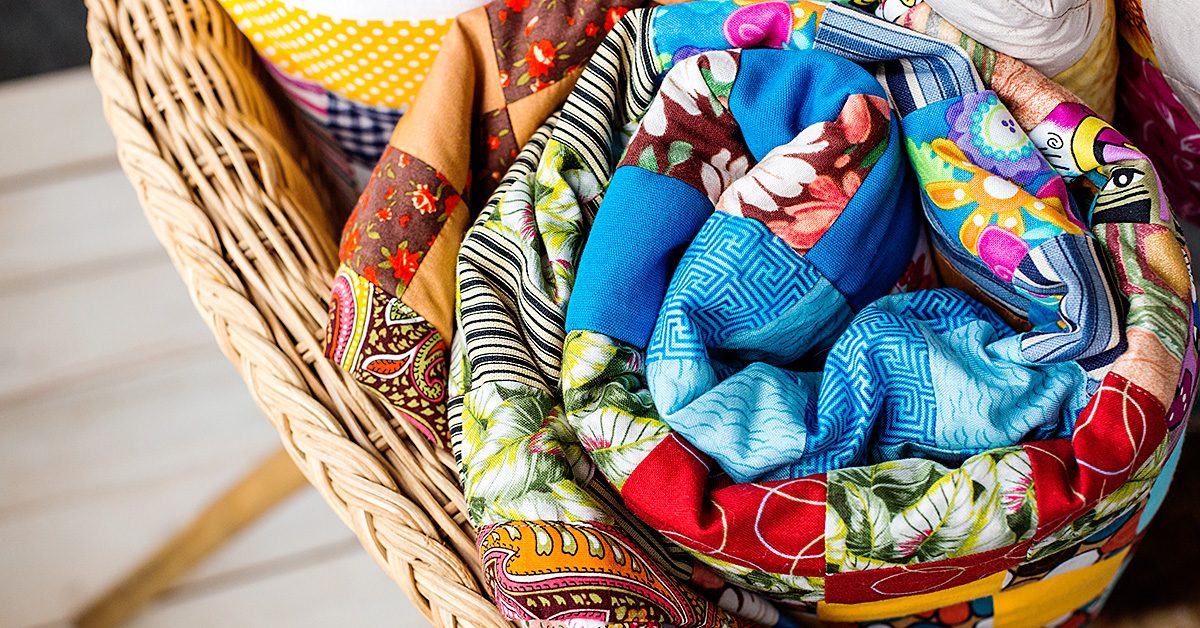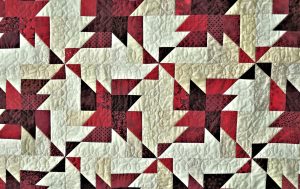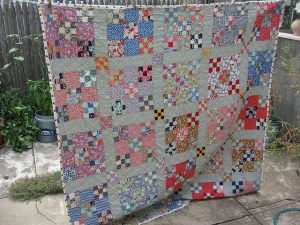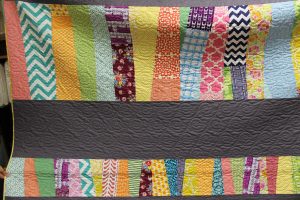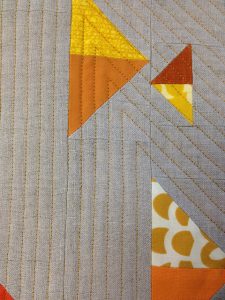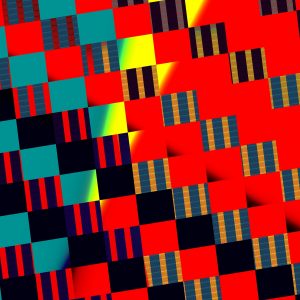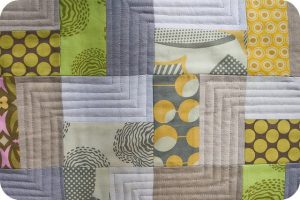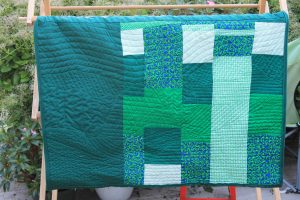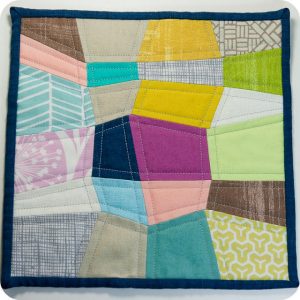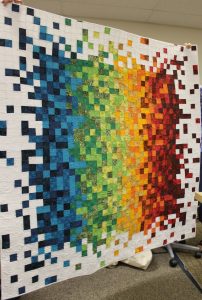Do you understand the differences between traditional and modern quilts?
Let’s look and see just what sets these different styles apart.
Traditional quilts
Traditional quilts are tried and true. Folks have been piecing and quilting these familiar designs for hundreds of years. Traditional patchwork designs have names: Log Cabin, Courthouse Steps, Nine-Patch, Dresden Plate. There are thousands of these traditional patterns, and these are based on blocks and a grid.
Traditional patchwork can be simple or complex, but it is usually made up of many repetitions of the same block and orderly rows. These are frequently combined with uniform sashing between individual blocks and/or borders all around. They rely heavily on symmetry in both the patchwork and the quilting.
Traditional quilt patterns are still made and loved today, but we can say that these are our grandmothers’ quilts—and their grandmothers before them.
Modern quilts
As the name implies, modern quilts are something new. They are more experimental and rely less on rules and order. Modern quilt designs began popping up in the last half of the twentieth century. But they really hit their stride just before the new millennium.
Modern quilts differ from traditional quilts in many ways. Traditional quilts rely on a grid of regularly repeating designs, symmetry, sashing, borders, often complicated patchwork, and simple quilting. In contrast, modern quilts go off the grid and use asymmetry, less fuss, minimalist designs, and a more improvisational style with unusual arrangements of blocks and settings.
While there is a definite list of characteristics that categorize the modern quilt style, these are not rules. Most modern quilts will fulfill at least one but not usually all of them. In general, modern quilt characteristics include a minimalist style; they emphasize negative space rather than intricate patchwork. They may feature bold colors and graphic designs that give high-contrast pop. And modern quilts often feature asymmetry and use unusual block placement and off-center motifs.
Modern colors and fabrics
Colors in modern quilts tend to be bold. High contrast graphic designs are created with brightly colored solid fabrics and striking modern prints. These are used more sparingly than in the more familiar repeating patterns which march across so many traditional quilts. The focus is on the bold modern fabrics, rather than fussy technique.
Negative space and dense, innovative quilting
Negative space features heavily in modern quilts. In traditional quilting, the repeating patchwork is meant to stand out. So traditional quilters most often construct backgrounds from neutral, receding colors. But backgrounds in modern quilts are brighter and more expansive. Whites and grays are popular choices to bring these negative spaces forward.
All this negative space highlights asymmetrical, alternate grid, or graphic modern quilting. Simple piecing contrasts with dense quilting in innovative designs. Whereas patchwork commands attention in traditional quilts; on modern quilts, the quilting more often stands out.
No rules quilting
Traditional quilting stitches may be straight and simple lines, such as with “stitch in the ditch” lines that follow piecing seams. Or they can be elaborate curliques and designs which are deliberately and symmetrically placed to line up with wide borders. They may even meander as free-motion stipples, but these must follow rules, and not cross each other.
Modern quilters are free to abandon all these rules. Modern quilting lines may cross to form geometric patterns, irregular curlicues, or any other design an imaginative quilter can dream up. Quilters can even combine many varied stitches and feature each separately to break up a large expanse of negative space into different sections, for example.
Free-motion quilting is one way to let loose and experiment with fun and free modern quilting. To quilt in the free motion style, use your darning foot. You can either lower your feed dogs to guide your fabric by hand, or you can leave your feed dogs up and just set your stitch length to zero. Either way works!
Leah Day, who teaches free-motion quilting online, challenged herself to create a new filler design every day for a year. And her Free-Motion Quilting Project blog is an excellent resource and inspiration.
Off the grid layout
Patchwork in modern quilts can include off center or tessellated designs. Modern quilts differ with much less reliance on uniform blocks and borders than is traditional and may feature irregular rows. Lack of borders and offset blocks create designs that continue beyond the quilt’s edge. In general, both the patchwork and the quilting on modern quilts tends not to rely on a grid.
Modern quilts may make use of technology, such as computers for visualizing designs, and tools such as cutting machines or tessellating or other specialty rulers, to assist with cutting and design.
Hybrid design: modern traditionalism
You don’t have to choose between these two styles, however! Modern traditionalism is a hybrid of both. These quilts marry the improvisational freedom in design, piecing, and quilting of modern quilts with the traditional patchwork designs that connect us to the many generations of quilters before us.
A modern traditional quilt may shrink a traditional pattern and sprinkle these sparsely as isolated individuals amongst a wide expanse of negative space. Other modern treatments of traditional patchwork include combining patterns or enlarging blocks to a single design. A quilter may then feature such blocks this off center, for example.
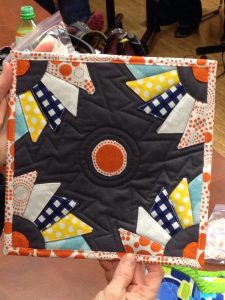
Modern traditionalism features new settings for traditional blocks. Photo courtesy of Trillium Designs

